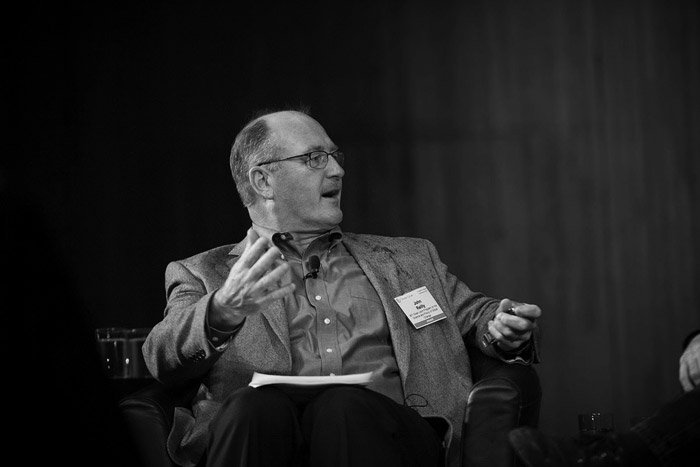Last Wednesday, Moyse Hall attendees watched society and technology collide. As part of a lecture series hosted by the Trottier Institute for Sustainability in Engineering and Design (TISED), McGill presented two views—one from an economist and one from an engineer—on the future of renewable power in North America.
The first speaker, economist John Reilly of MIT, discussed the ramifications of the U.S. power supply evolving to rely on 80 per cent renewable sources. Jim Burpee, president and CEO of the Canadian Electricity Association (CEA), followed up by bringing the subject matter closer to home and looking at the future of electricity in Canada.
Reilly’s study examined a few scenarios on what the makeup of energy sources in the U.S. could look like in a few decades. He emphasized the difficulty of using unpredictable renewable sources like wind and solar energy.
As an economist, Reilly then compared the costs of these energy sources to coal. He found that renewables like wind power are more expensive, not because of the cost of technology, but because of the unreliability of these sources.
In spite of these challenges, Reilly’s study found that with a flexible grid system and strategic placement of generators, 80 per cent renewable energy production in the U.S. is feasible using only today’s commercially available technologies. Furthermore, electricity prices in the model only went up as much as would be expected in order to reduce greenhouse gas (GHG) emissions.
However, Burpee showed that Canada’s energy sources were a different situation. He started his presentation with a breakdown of Canadian energy sources, of which 80 per cent were already non-GHG emitting.
Despite this impressive number, the CEA is continuing to improve sustainability.
In essence, decarbonization is the act of declining the average carbon intensity of primary energy over time. While global progress is slow—a 0.3 per cent decline per year, according to the Intergovernmental Panel on Climate Change (IPCC)—the trend is showing declining carbon use.
According to Burpee, “The question isn’t whether to decarbonize—it’s, ‘At what rate [should we decarbonize?]’”
To find an answer, Burpee explored the costs associated with decarbonization, the role of government regulation, and the viability of nuclear power to replace carbon. He discussed the three pillars of energy supply: Sustainability, affordability, and reliability. In order to improve sustainability without affecting reliability, the price of electricity has to go up.
Burpee also noted the potential for technological advancements to improve sustainability. Solar panel efficiency, for example, is 17 per cent. Even the internal combustion engine appears embarrassingly inefficient at 30 per cent, leaving room for improvement.
The evening ended with a Q&A period, where one of the final questions resonated with McGill students in particular: What role can young people play in the move towards sustainable sources?
Both presenters agreed that technological developments are integral to society’s ability to switch to renewable energy sources. Beyond engineers, computer scientists will also become increasingly important as the grid becomes smarter.
The second day’s lecturer, Jessika Trancik, also hailed from MIT. With a background in materials science, her lab analyzes the costs and environmental impacts of energy technologies. Her work aims to improve the efficiency of energy production and storage.
Trancik’s talk highlighted the immense improvements that have been made in renewable energy production. For example, photovoltaics—solar panels—are about 100 times cheaper today than they were in 1974.
However, these developments don’t happen in a vacuum. Investment in technology is essential to continue improving at this rate. Trancik’s work has shown the link between public funding and the rate of patent filing in both the U.S. and Japan. These links show growth in certain markets, particularly those focused on sustainability.
The talks highlighted the fact that the shift to renewable energy is not an isolated problem. It is important for people from all fields to take a stance to help solve the issues facing the implementation of renewable energy.








